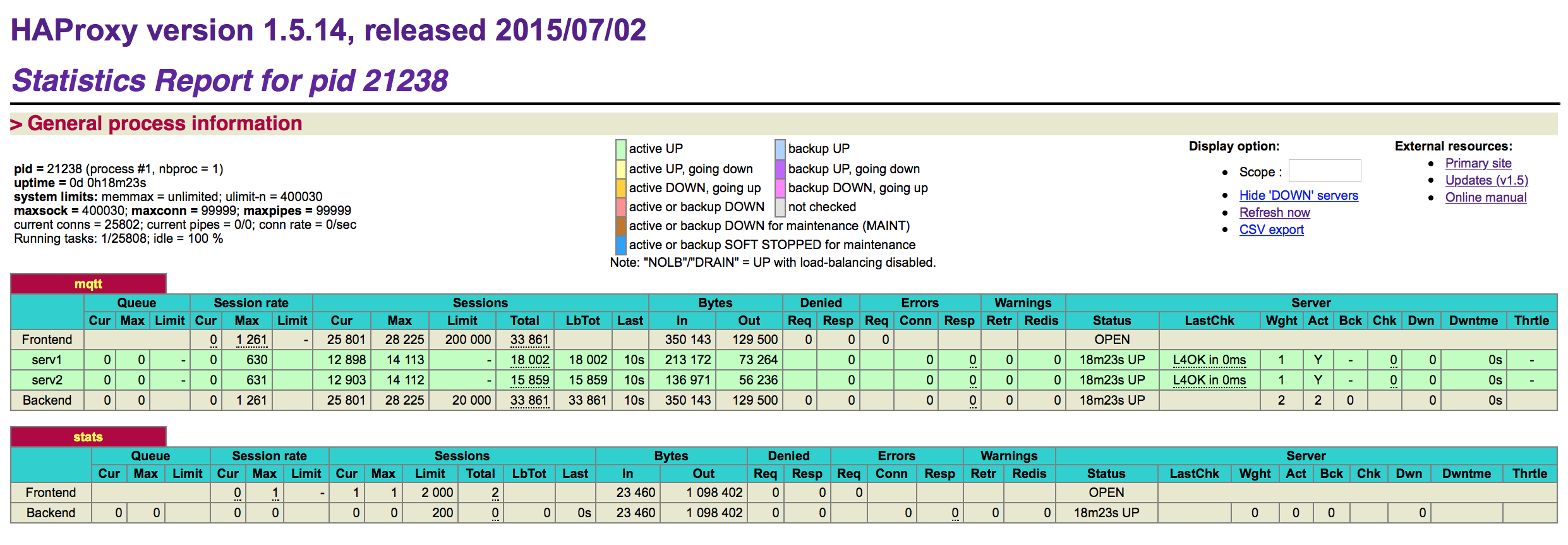Load Balancing with HAProxy
Need to cluster
IBM has a Redbook for its own IOT service environment. The book also described the topologies of enterprise MQTT service architectures. So, to cluster some mosquitto brokers, we need some other tools.
Mosquitto is a single thread process. To scale out, we need tools to better monitor and manage them.
Cue in load balancing
I followed the steps in this nice tutorial, others you googled might be just as good, as HAProxy is very easy to install, configure and run.
I changed the configuration to match our need for mqtt connections.
listen mqtt
bind *:1883
bind *:1884
mode tcp
maxconn 200000
option tcplog
option redispatch
balance leastconn
server serv1 192.168.0.36:1883 source 0.0.0.0:1024-65535 check
server serv2 192.168.0.136:1883 source 0.0.0.0:1024-65535 check
listen stats *:1936
stats enable
stats uri /Configurations explained
option redispatch
This is used to tell HAProxy to retry to another backend server when one of the servers goes down, rather than giving a 503 error back to the fronted.
balance leastconn
This is the balancing algorithm, we expect to have many TCP connections with little traffic and low spikes so the we should use this method to pan out the number of connections evenly.
source 0.0.0.0:1024-65535
See this nice email exchange, also see haproxy’s configuration manual.
Basically,
Monitoring HAProxy
The HAProxy comes with a handy web interface for quick monitoring. The stats block of the configuration shows how to do this. I left out the auth config so I don’t have to type in user name and password every now and then.

Conclusion
HAProxy can be used to load balance a cluster of single-threaded mosquitto servers in a LAN environment. We can even setup multiple clusters globally.
Next we maybe can try out the provisioning service as to auto configure the MQTT clients.